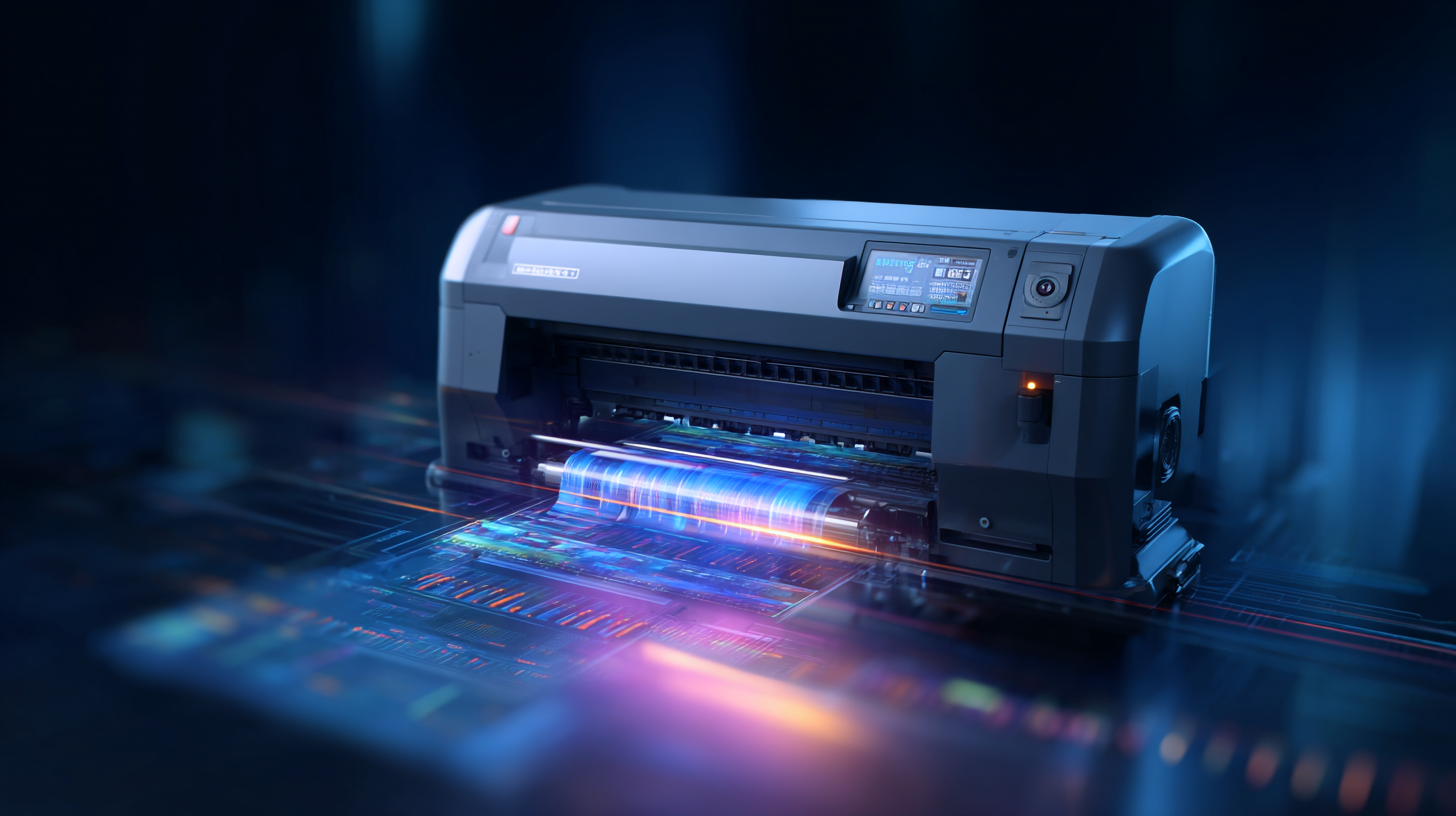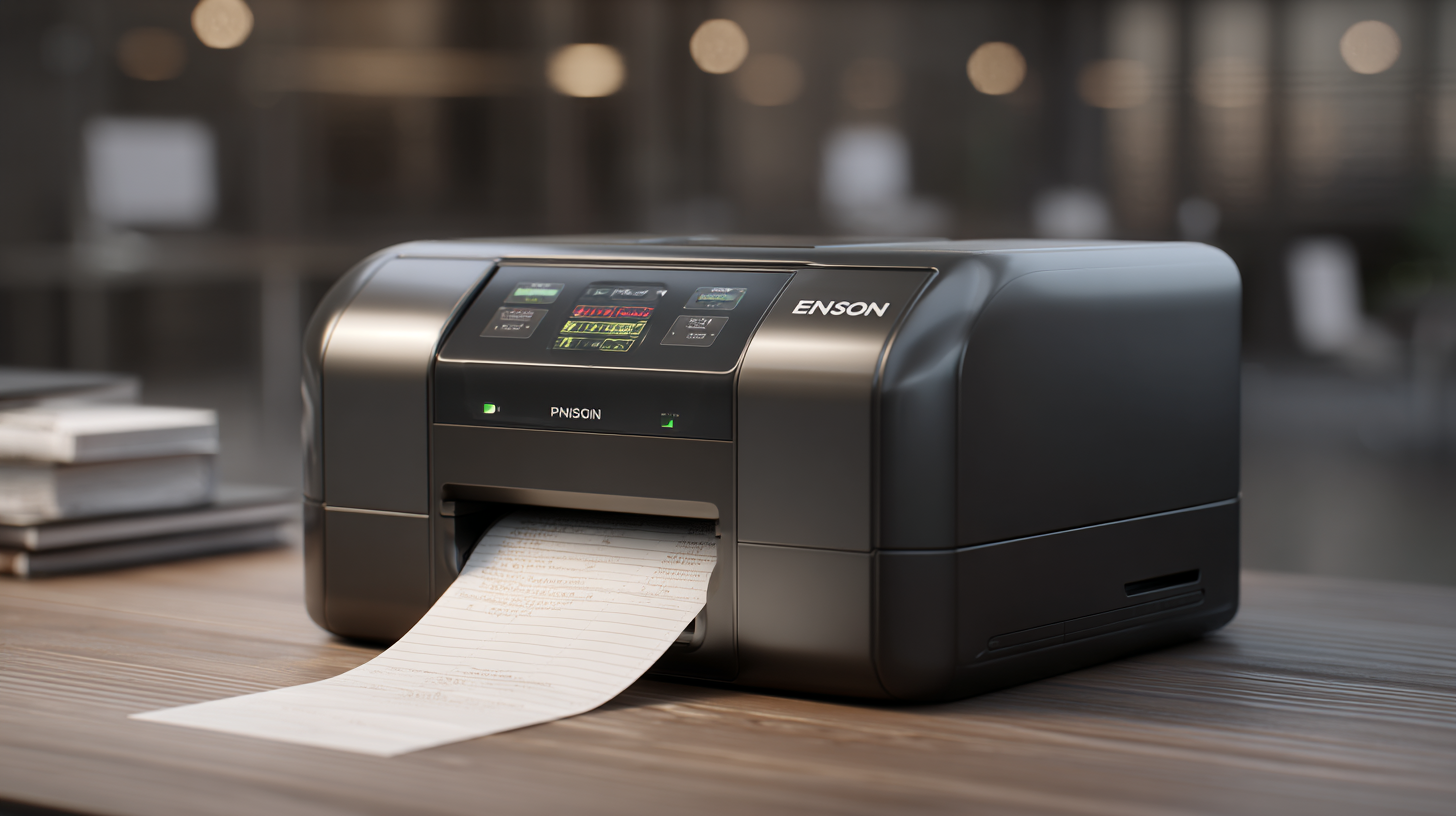In today's fast-paced business environment, the need for efficient and reliable printing solutions has never been more critical. Thermal printers, known for their speed and high-quality output, are poised to revolutionize modern business operations. According to a report by MarketsandMarkets, the thermal printing market is expected to reach $36.3 billion by 2026, growing at a CAGR of 5.0%. This substantial growth underscores the increasing adoption of thermal printer technology across various industries, driven by their ability to streamline processes and reduce operational costs. With advancements in thermal printing innovations, businesses can expect enhanced productivity and greater accuracy, making the transition to the best thermal printers not just a strategic move but a necessity for future competitiveness. As companies look to optimize their workflow, understanding the alternatives available in the thermal printer landscape becomes paramount for maximizing efficiency and achieving operational excellence.

 The evolution of thermal printing technology is reshaping modern business operations, particularly in areas like inventory management and logistics. With barcode printers streamlining the process, businesses can expect enhanced operational efficiency and accuracy in tracking inventory.
The evolution of thermal printing technology is reshaping modern business operations, particularly in areas like inventory management and logistics. With barcode printers streamlining the process, businesses can expect enhanced operational efficiency and accuracy in tracking inventory.
According to recent market forecasts, the barcode printer market is set to grow significantly from 2025 to 2035, as retailers and manufacturers increasingly adopt advanced printing solutions to meet dynamic market demands and improve supply chain visibility.
Furthermore, as digital disruption continues to penetrate various industries, thermal printers are adapting to new operational requirements. This transformation highlights the importance of print quality, which is being driven by innovations in hardware design, such as advanced printheads. As companies seek to reduce waste and enhance production speed, the integration of thermal printing technology becomes crucial.
By 2030, the additive manufacturing sector is anticipated to exceed a value of $40 billion, indicating a robust environment for innovative printing solutions, including thermal technology, to thrive within diverse manufacturing contexts. As businesses embrace these advancements, the role of thermal printers will undoubtedly expand, demonstrating their pivotal role in modern business infrastructure.
When exploring the best thermal printers for modern business operations, several key features set apart the top contenders in the market. First and foremost, print quality is essential. Businesses need printers that deliver sharp, clear images and legible text consistently. High-resolution printing capabilities ensure that barcodes and receipts can be scanned and read easily, which is vital for retail and logistics industries. Look for thermal printers with at least 300 DPI (dots per inch) resolution to achieve optimal results.
Another significant feature to consider is speed. In today's fast-paced environment, efficiency is key. A thermal printer capable of producing high volumes of prints quickly can dramatically enhance workflow and customer satisfaction. Additionally, connectivity options play a crucial role; modern printers should support various connection methods, including USB, Bluetooth, and Wi-Fi, enabling seamless integration with existing business systems. Finally, durability and user-friendly design cannot be overlooked. Choosing a robust thermal printer that is easy to operate and maintain will ensure long-term reliability and reduced downtime, allowing businesses to stay focused on their core operations.
Thermal printers are increasingly becoming essential tools across various industries, significantly enhancing operational efficiency and accuracy. In the retail sector, for example, a recent study revealed that implementing thermal printing technology reduced checkout times by up to 30%. By providing quick, reliable receipt printing, retailers can streamline their customer service processes, leading to higher customer satisfaction rates. Additionally, the global thermal printer market is projected to reach $5.3 billion by 2025, underscoring the growing importance of this technology in modern business environments.
Manufacturing and logistics also benefit greatly from thermal printing applications. According to industry reports, over 60% of warehouses have adopted thermal printers for label generation, facilitating better inventory management. This technology ensures that products are accurately labeled, reducing errors by approximately 20%, which can lead to significant cost savings. Furthermore, the ability to print high-quality barcodes at high speeds means that companies can track inventory in real-time, making operations more agile and responsive to market demands. As industries continue to evolve, thermal printers are set to play a crucial role in driving productivity and operational excellence.
Investing in thermal printers can significantly enhance your business operations, particularly in terms of cost efficiency and productivity. These printers, known for their speed and reliability, offer a low-cost solution for high-volume printing needs like shipping labels and invoicing. By switching to thermal printing technology, companies can save on ink costs and reduce maintenance expenses, since thermal printers have fewer moving parts compared to traditional printing methods.
**Tips:** When considering thermal printers for your business, focus on choosing a model that suits your specific application. Different printers excel in various fields, so assess your printing volume and type before making a decision. Additionally, keep an eye on warranty and support services that come with the printer, as these factors can influence your long-term costs.
Moreover, the integration of thermal printers into your existing workflows can streamline operations. By automating printing tasks, employees can redirect their efforts toward more strategic initiatives, ultimately improving overall productivity. Embracing this technology not only enhances efficiency but also positions your business to adapt quickly to changing market demands.

As businesses increasingly turn to innovative technologies, the next generation of thermal printing solutions is set to reshape operational efficiency and enhance customer experience. According to a recent report by the Freedonia Group, the thermal printing market is projected to reach $5 billion by 2026, driven by advancements in mobile printing and label production. These innovative printers are not only faster but also more versatile, capable of producing high-quality labels and receipts while minimizing waste.
Tip: Businesses should consider evaluating their current printing needs and exploring thermal printing solutions that integrate seamlessly with their existing systems. This could lead to significant cost savings and improved workflow efficiency.
In addition to increased efficiency, emerging trends in thermal printing, such as eco-friendly materials and advanced connectivity options, are gaining traction. For instance, a report from Research and Markets highlights that smart thermal printers equipped with IoT capabilities are expected to dominate the market. These devices allow real-time monitoring and versatile printing options, which can streamline inventory management and improve operational responsiveness.
Tip: Embracing these smart solutions can provide businesses with valuable data insights, allowing for more informed decision-making processes. Companies should keep an eye on advancements in technology and evaluate how these can be integrated into their operations for better performance.
